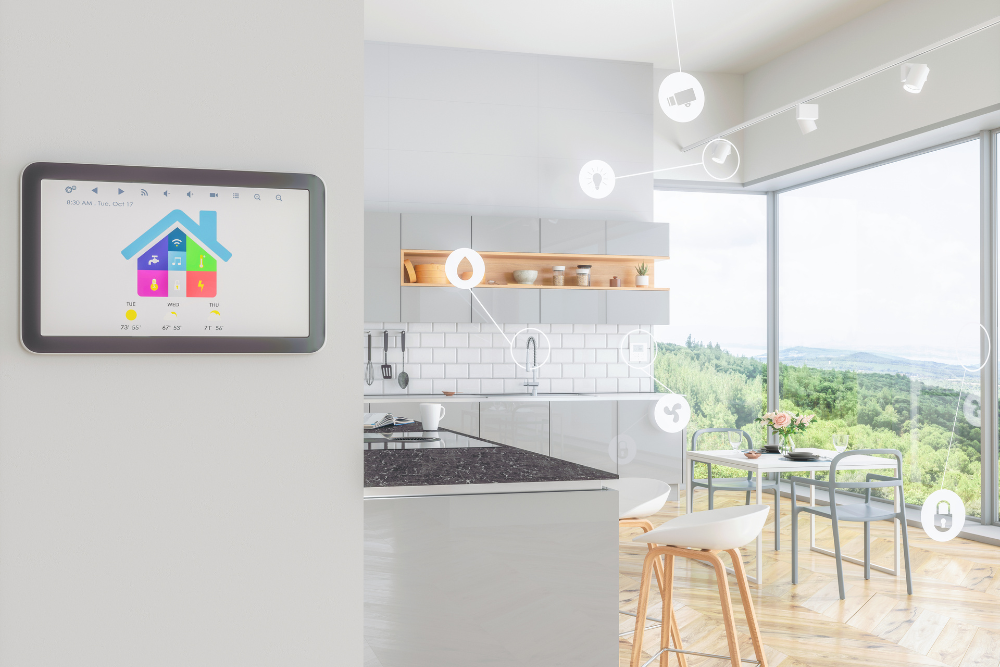In today's rapidly evolving real estate landscape, the demand for homes that harmonize with nature while embracing technological advancements is on the rise. Smart homes in nature-friendly markets offer a unique blend of sustainability and innovation, providing homeowners with efficient, eco-conscious living spaces. These properties are not only designed to minimize environmental impact but also to enhance the quality of life through intelligent systems that manage energy, water, and indoor climate. As more buyers seek residences that align with their values of environmental stewardship and modern convenience, understanding the features and benefits of these homes becomes essential.
Understanding Smart Homes in Nature-Friendly Markets
What Defines a Smart Home?
A smart home integrates advanced technologies to control and automate various household systems, such as lighting, heating, cooling, security, and appliances. These systems are typically connected to the internet, allowing homeowners to monitor and manage their homes remotely via smartphones, tablets, or voice assistants. In nature-friendly markets, smart homes go beyond convenience—they are designed with sustainability at their core. Features like energy-efficient appliances, solar panels, rainwater harvesting systems, and smart thermostats help reduce the home's carbon footprint and promote environmental responsibility.
Characteristics of Nature-Friendly Markets
Nature-friendly markets are regions where real estate development emphasizes ecological preservation, sustainable practices, and integration with the natural environment. These areas often feature green building certifications, such as LEED (Leadership in Energy and Environmental Design), and promote community designs that encourage walkability, use of renewable resources, and conservation of local ecosystems. Homes in these markets are typically situated in scenic locations, offering residents access to natural landscapes while minimizing urban sprawl and habitat disruption.

Key Features of Smart Homes in Nature-Friendly Markets
1. Energy Efficiency and Renewable Energy Integration
One of the primary advantages of smart homes in nature-friendly markets is their focus on energy efficiency. These homes often incorporate renewable energy sources, such as solar panels and wind turbines, to generate clean electricity. Smart thermostats and energy-efficient appliances further optimize energy use, reducing waste and lowering utility bills. For instance, smart thermostats can learn a homeowner's schedule and adjust temperatures accordingly, ensuring comfort while conserving energy.
2. Water Conservation Technologies
Water scarcity is a growing concern worldwide, making water conservation an essential feature of eco-friendly homes. Smart homes in nature-friendly markets often include rainwater harvesting systems, greywater recycling, and low-flow fixtures to minimize water usage. These technologies not only reduce the home's environmental impact but also promote sustainable water management practices within the community.
3. Sustainable Building Materials and Design
The construction of smart homes in nature-friendly markets emphasizes the use of sustainable materials and designs that blend seamlessly with the natural environment. Builders often use recycled, reclaimed, or locally sourced materials to reduce the carbon footprint associated with transportation and manufacturing. Additionally, homes are designed to maximize natural light and ventilation, reducing the need for artificial lighting and climate control.
4. Smart Landscaping and Outdoor Living Spaces
Landscaping in nature-friendly markets focuses on native plants and xeriscaping techniques that require minimal water and maintenance. Smart irrigation systems can be programmed to water plants based on weather conditions, further conserving water resources. Outdoor living spaces are designed to encourage residents to connect with nature, featuring elements like green roofs, living walls, and outdoor kitchens that promote sustainable lifestyles.
5. Health and Wellness Features
Smart homes in nature-friendly markets often incorporate health and wellness features that enhance the quality of life for residents. These may include air purification systems, circadian lighting, and biophilic design elements that connect indoor spaces with the natural environment. Additionally, some homes offer wellness amenities like yoga studios, meditation rooms, and home spas to promote physical and mental well-being.

Benefits of Living in Smart Homes in Nature-Friendly Markets
1. Reduced Environmental Impact
By integrating renewable energy sources, water conservation technologies, and sustainable building materials, smart homes in nature-friendly markets significantly reduce their environmental footprint. These homes contribute to the conservation of natural resources and the reduction of greenhouse gas emissions, aligning with global efforts to combat climate change.
2. Lower Utility Costs
The energy-efficient features of smart homes, such as smart thermostats and energy-efficient appliances, help homeowners reduce their utility bills. Additionally, the use of renewable energy sources can decrease reliance on the grid, leading to further cost savings.
3. Enhanced Quality of Life
Living in a nature-friendly market offers residents access to natural landscapes and outdoor recreational opportunities, promoting a healthy and active lifestyle. The integration of smart technologies enhances convenience and comfort, allowing homeowners to manage their homes efficiently and securely.
4. Increased Property Value
Homes that incorporate smart technologies and sustainable features are often more attractive to buyers, leading to increased property values. In nature-friendly markets, the emphasis on ecological preservation and community well-being further enhances the desirability of these properties.

Considerations When Purchasing a Smart Home in a Nature-Friendly Market
1. Initial Investment
While smart homes offer long-term savings, the initial investment can be higher due to the cost of advanced technologies and sustainable materials. It's essential to weigh the upfront costs against the potential savings and environmental benefits over time.
2. Technological Compatibility
Ensure that the smart home systems are compatible with your existing devices and platforms. Some systems may require specific operating systems or applications, so it's important to verify compatibility before making a purchase.
3. Maintenance and Support
Smart home technologies require regular maintenance and updates to function optimally. Consider the availability of technical support and the ease of servicing the systems when selecting a property.
4. Community Regulations
Nature-friendly markets often have community guidelines and regulations to preserve the environment and maintain the aesthetic appeal of the area. Familiarize yourself with these rules to ensure that your lifestyle aligns with the community's values.

Smart homes in nature-friendly markets represent the future of sustainable living, offering a harmonious blend of technology and environmental consciousness. These homes provide homeowners with the opportunity to reduce their ecological footprint while enjoying the comforts and conveniences of modern living. As the demand for eco-friendly properties continues to grow, investing in a smart home in a nature-friendly market not only benefits the environment but also enhances personal well-being and financial savings.


